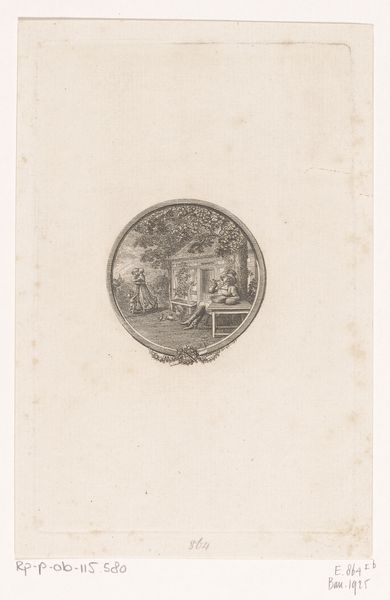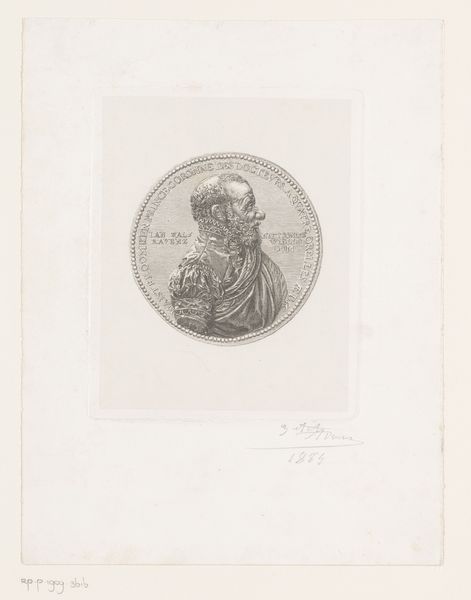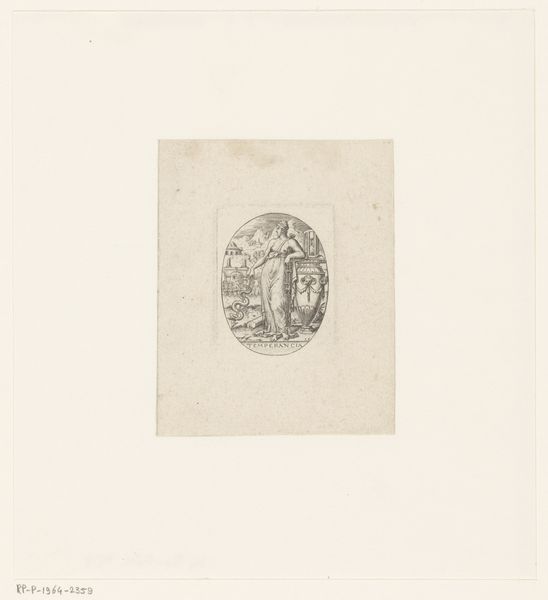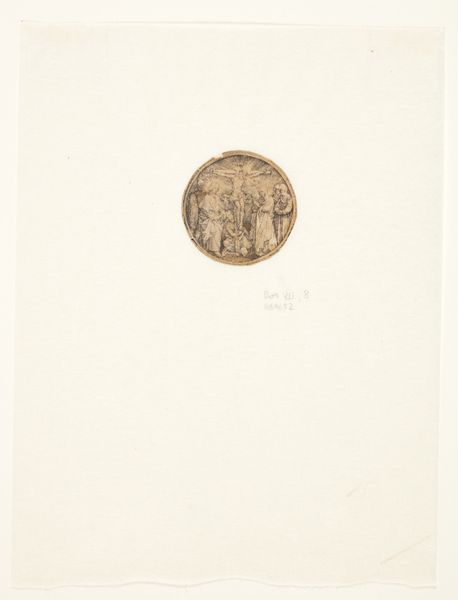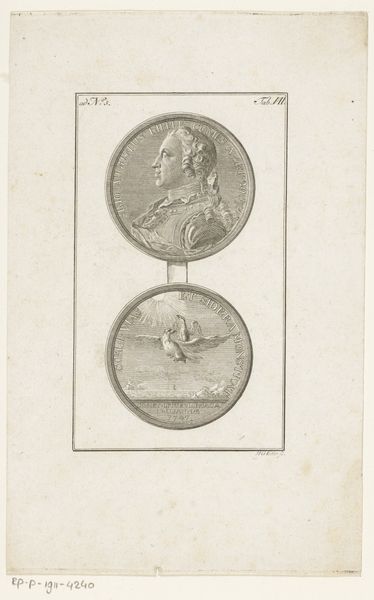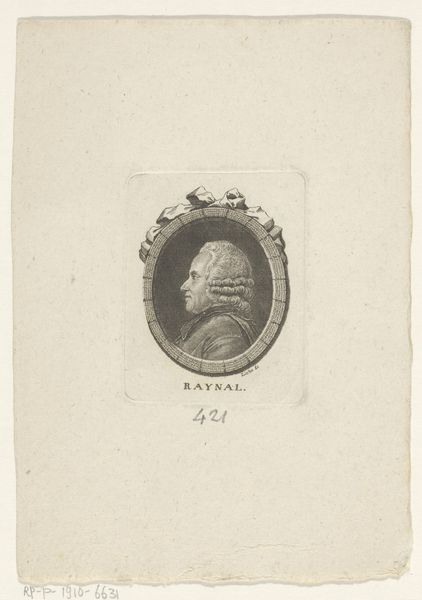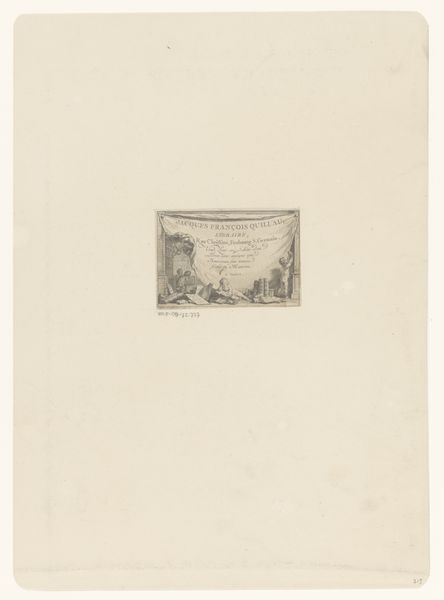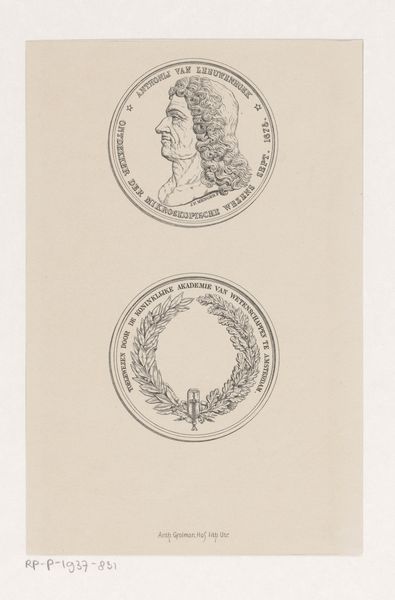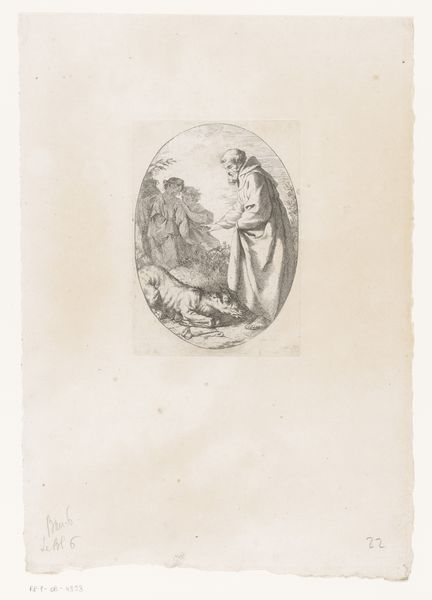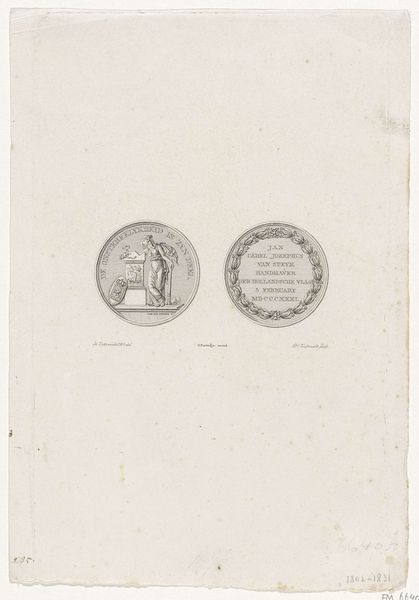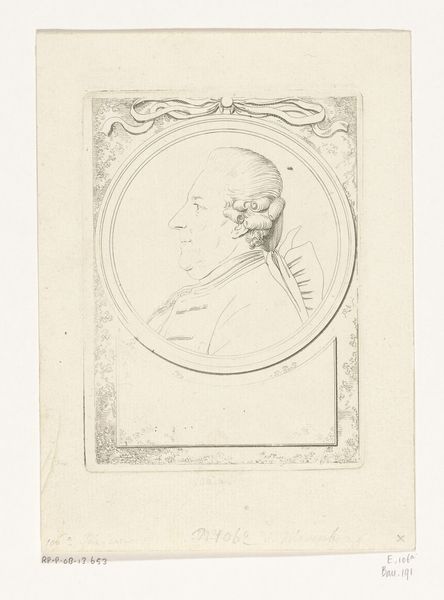
print, engraving
#
portrait
# print
#
history-painting
#
academic-art
#
engraving
Dimensions: height 179 mm, width 145 mm
Copyright: Rijks Museum: Open Domain
This is a print made by Auguste Danse in 1874, depicting a medal from 1563 portraying Jan Walravenz. The print translates the medal's three-dimensional form into a two-dimensional image, using a printing process that captures the texture and detail of the original object. The choice of printmaking as a medium is crucial. It allowed for the widespread dissemination of Walravenz's image, and the medal itself would have been created through techniques like casting or striking, processes demanding skilled craftsmanship. The original medal served as a symbol of status, and authority, carefully crafted to convey power. Danse's print replicates this sense of detail, and texture, reminding us of the labor involved in both creating the original medal, and reproducing it for a wider audience. By focusing on the processes of reproduction, we can consider how images and symbols circulate within society, influencing perceptions of status, and historical memory. The value of this artwork lies not only in its aesthetic qualities, but also in its representation of labor, and social status.
Comments
No comments
Be the first to comment and join the conversation on the ultimate creative platform.
